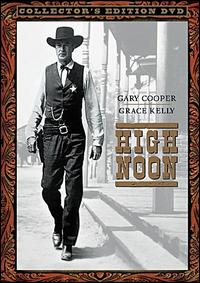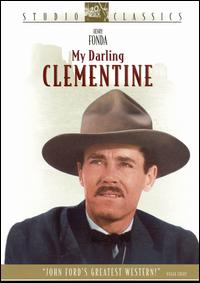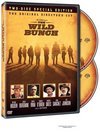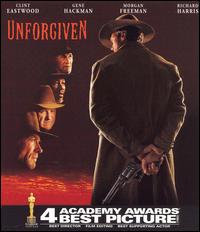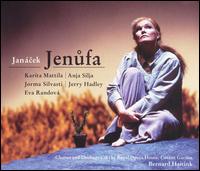
Jenufa / Leos Janácek
M1500.J32 J42 2002
It says a lot for Janácek's growing presence in the operatic mainstream that Jenufa, which waited more than a decade for its "big city" premiere in Prague, and which existed for many years only in an edited and re-orchestrated version by Karel Kovarovic, now has multiple recordings using the original score — and good ones, at that. This live recording from Covent Garden is truly wonderful, and it joins Charles Mackerras' 1982 recording of his own re-construction as a first choice for anyone interested in the work. Karita Mattila shines in the title role, exploiting every brief moment of lyricism that emerges from Janácek's speech-inflected score. Her suffering and betrayal at the hands of her family, and her eventual forgiveness of those hurts, is extremely moving. Jorma Silvasti is similarly believable as the jealous and rueful Laca. Although the bloom is gone from her voice, Anja Silja is perfectly cast as Jenufa's stepmother; her genuine shame and despair at her murder of Jenufa's child allows their final reconciliation to take on a humanity that it would not if she were played with less sympathy. Jerry Hadley is perfectly unlikable in the role of Steva — a man so shallow that he would forsake the mother of his child over a scar on her cheek; his singing is excellent, as is his handling of the Czech language. Finally, Bernard Haitink deserves complements for leading such a tidy and well articulated performance. His balancing of orchestral colors and attention to pace make the score sound deceptively straightforward; the few moments when the orchestra overbalances the singers are an inevitable problem of live recordings, and shouldn't bother most listeners. The package comes with excellent notes and a full libretto. ~Allen Schrott,
All Music Guide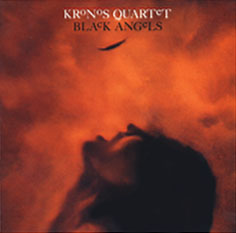 Black Angels
Black Angels / Kronos Quartet
M450.K76 B5 1990
Black Angels is one of Kronos' finest works, a haunting cycle of compositions thematically linked by their relationships to war and brutality. The title piece, composed by George Crumb in response to Vietnam, is marked by its contrasting emotional and dynamic shifts; for effect, the Quartet augments its music with chants, shouts, whispers and the occasional moment of percussion. Multiple overdubs create the vast sound on 16th-century composer Thomas Tallis' 40-part motet "Spem in Alium," a response to Holofernes' siege on the Jewish fortress of Bethulia. The only commissioned work on the record is Istvan Marta's "Doom. A Sigh," based on a pair of Romanian folk songs. ~Jason Ankeny,
All Music GuideAlready It Is Dusk: String Quartet No. 1, Op. 62
It took Polish composer Henryk Górecki thirty-five years to get around to his first string quartet; but, when he finally set about it he created a work of great energy and originality. The music draws on the folk traditions of the region in the south of Poland where Górecki spent a good deal of time. The title, "Already It Is Dusk," comes from a sixteenth-century church song by Polish composer Waclaw z Szamotul, the melody of which Górecki had already used in his orchestral work, Old Polish Music, from 1969. In this piece, he uses it as a sort of refrain, played very quietly, but harmonized in a chromatic, quasi-serial fashion. The piece proceeds in a single movement that divides perceptibly into discreet sections. The opening "chorale" is played three times, each time interrupted by fierce, dissonant chordal gestures, derived in part from the harmonization of the chorale, and in part from the open-string fifths characteristic of folk music (though here superposed chromatically to create a harsh sonority). After the third interruption of the church-song material, the dense open-fifth chords open into a circular progression, retaining the tension of the stacked dissonance but introducing a melodic element. After a brief return to the quiet chorale, the quartet breaks quite suddenly into a rollicking dance, with the group split into two — one pair carrying on an ostinato and the other a harmonized modal melody. The dissonances contained in both elements contribute a certain "roughness" to the music that conveys well the "village-dance" character of the material. The pairs trade off and then gradually die away on a series of exposed open fifths that are finally shorn of their chromatic context. The piece returns to the quiet church-song chorale of the first section before closing with an extraordinary statement of sonorous triads, quite Beethovenian in character. With a final twist, though, Górecki allows the sound to die away with a dissonant note sounding above. Perhaps, given the suffering and oppression the composer witnessed through his lifetime, along with his own struggles with debilitating illness, it wasn't quite possible to end the piece with a full resolution. Without knowing it, perhaps, Górecki was also looking to his next string quartet, which carries on where this one leaves off.
Quasi una Fantasia: String Quartet No. 2, Op. 64
At the end of his first string quartet, Henryk Górecki planted a brief reference to sonorous triads strongly reminiscent of Beethoven. For his second quartet, which followed only a few years later, Górecki paid more explicit homage to the master. The title, Quasi una Fantasia, derives from Beethoven, though none of the material does, at least not directly. The model appears more on the level of large-scale design and the predilection for extremes of expression. The quartet is organized into four movements, lasting close to forty minutes. Each movement breaks out of its primary character or material to include sections that refer to the others, in some fashion or other. The first, a lament, presents a grief-filled melody, built from melodic fragments that tend to fall by half-step, a traditional gesture of "affect." This is heard over a slowly pulsing pedal, placed in dissonant relationship to the melody. There is one point in the middle where the falling motive is inverted, rising to a major third above the pedal, a ray of light in the midst of gloom. At the end, a radiant progression of major chords appears, suddenly transporting the music to another world. "Deciso-Energico," the second movement resembles a march. The beats are marked with heavy down bows sounding a minor third, and the more active melodic fragments are set at a dissonant relationship to these. The melody unfolds in fragments, or gasps, finally unleashing a flowing line harmonized in thirds in the upper range of the violins. There are various interruptions, though, and eventually, a luminous reappearance of the "Beethoven" chords. The dark dance carries on, gradually faltering, intercut more and more with silences, to lapse into the lament of the first movement. However, Górecki relents and moves into sonorous major chords, leading directly to the lyrical outpouring of the third movement. The Arioso is much more elevated in tone than the previous movements. The first section alternates between F and C triads, with B flat minor used for expressive coloration. The passionate melody that unfolds above is not set in the same key, but the points of dissonance and resolution are exploited for maximum expressive intent. There is a striking point in the middle where the supporting harmony falls away, leaving only the two violins carrying on, harmonized in minor ninths. This leads to a brief reference to the second movement, then another statement of the Beethoven chords. One more echo of the Arioso theme gives way to chorale-like material to close. The fourth movement begins as a rather joyous dance. The rhythmic patterns shift unpredictably between duple and triple meters, and the ostinato harmonies shift at key points. These lend a certain off-balance character to the dance. But Górecki trades off the melody between low and high and builds intensity until at last he brings all four instruments together in the middle register. From there, the music begins to hint at a return to the transcendent chorale heard earlier. It eventually arrives, as does an enigmatic reference to the Christmas hymn Silent Night! The piece closes with a combination of the pulsing low E of the opening and a sustained B flat triad derived from the chorale. The transformations and re-combinations of materials throughout this quartet are indeed masterful, worthy of its homage. ~Jim Harley,
All Music GuideBenjamin Britten spent most of the 1950s adding to a string of successful operas that had begun with Peter Grimes in the mid-1940s. Though he took a brief sojourn from opera to write the War Requiem, it is clear that the dramatic spirit that fueled his operatic efforts carried over into this work, his most monumental effort. While the Requiem is in its own way even more overtly theatrical than Verdi's well-known Requiem (described by Hans von Bülow as "an opera in ecclesiastical guise"), it cannot properly be thought of as an opera without staging. The musical procedures of Britten's operas were quite well established by 1961, and the War Requiem really has little to do with them. The work instead relies on simple, sectional musical means to convey a pattern of thought that even listeners unfamiliar with the often confusing realm of mid-twentieth century music can follow with little trouble. Indeed, such an immediately accessible idiom was one of the composer's basic goals when he set himself to interpolating the anti-war poetry of Wilfred Owen (killed in action just one week before the Armistice of 1918) into the traditional requiem scheme. The War Requiem is by no means pure music, nor could its various sections conceivably stand alone. It is a work with a basic human message, simple and uncontrived and utterly reliant on the distribution of textual materials (separate instrumental and vocal forces are assigned to the two disparate bodies of text) to achieve its impact. The work attained an almost immediate rapport with English-speaking audiences around the world after its May 9, 1962, premiere at the new Coventry Cathedral, and to many it remains Britten's supreme achievement. On a structural level, the War Requiem is massive, its six large movements, each comprising several smaller sections, of some 90 minutes' total duration. From the bells and chantlike chorus in the opening bars of the Requiem aeternam, Britten's use of the tritone as a basic unifying device is obvious. A boys' choir breaks in with the Te decet hymnus, only to be interrupted by Owen's poem "What passing-bells" set as a tenor solo. (The solo tenor and baritone sing all the poetic texts.) The restless tritone gives way to a moment of temporary repose at the end of this first movement, which resolves on an F major chord. The Dies Irae, containing no fewer than ten separate subsections, is the longest of the six movements, while the following Offertorium and Sanctus together comprise only six sections of music. The Dies Irae closes with a quiet choral Pie Jesu, while the Sanctus is the only movement to end with one of Owen's poems, the grim baritone solo "After the blast of lightning." Chillingly, the closing Dona nobis pacem (Grant us peace) of the following Agnus Dei is sung not by the chorus, as might be expected, but rather by the anguished tenor soloist. At the end of the final Libera me, however, some peace, or at least rest, is reached at last as the unaccompanied chorus finds the strength, after a lengthy and tortured tumult, to resolve the burdensome tritone to the sonorous F major chord of the final "Amen." ~Blair Johnston,
All Music Guide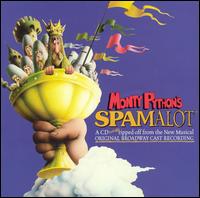 Monty Python's Spamalot: original Broadway cast recording
Monty Python's Spamalot: original Broadway cast recording / book & lyrics by Eric Idle ; music by John Du Prez & Eric Idle
M1500.D94 M66 2005
While millions of fans have made a hobby out of repeating Monty Python bits for the amusement of themselves and others over the years, Spamalot may be the first example of folks going pro with this pastime — though Eric Idle's participation at least gives this the advantage of also being an official product. Spamalot is, of course, the stage musical loosely based on Monty Python and the Holy Grail, and while the original cast album only provides part of the experience, listening to the album will give many fans a very curious sense of deja vu — some of these songs are drawn from the movie, albeit with a great deal more polish (such as "Brave Sir Robin" and "Knights of the Round Table"), and others translate business from the film into musical terms ("He Is Not Dead Yet" and "Run Away"), while "Always Look On the Bright Side of Life" from Life of Brian is also thrown in for good measure. The score does manage a good bit of original silliness, though, including a number of amusing parodies of show tune clichés ("The Song That Goes Like This") and one truly inspired new laugh-generator, "You Won't Succeed on Broadway" ("...if you don't have any Jews"). In many respects, the Spamalot recording favors Broadway over Python; the material lacks the sharp edge of Python's best material, and the level of polish seems nearly antithetical to those old television shows and the low-budget film that inspired all this. But the songs are sprightly, the material is genuinely witty, and the cast is in fine fettle, especially David Hyde Pierce as Sir Robin and Sara Ramirez as the Lady of the Lake. In short, this won't replace your copy of Another Monty Python Record, but Python fans will have fun with it, and it's a great trailer for the stage show. ~Mark Deming,
All Music Guide











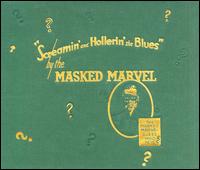 Screamin' and Hollerin' the Blues
Screamin' and Hollerin' the Blues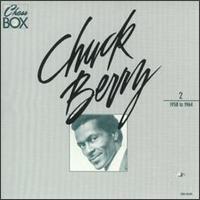
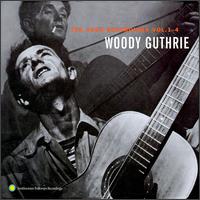 Woody Guthrie: The Asch Recordings Vol. 1-4
Woody Guthrie: The Asch Recordings Vol. 1-4

 Black Angels
Black Angels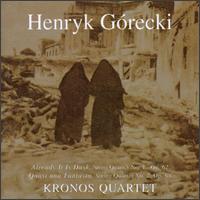 Already it is dusk: string quartet No. 1, Op. 62 ; Quasi una fantasia: string quartet No. 2, Op. 64
Already it is dusk: string quartet No. 1, Op. 62 ; Quasi una fantasia: string quartet No. 2, Op. 64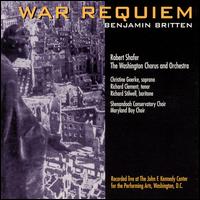 War Requiem
War Requiem Monty Python's Spamalot: original Broadway cast recording
Monty Python's Spamalot: original Broadway cast recording
